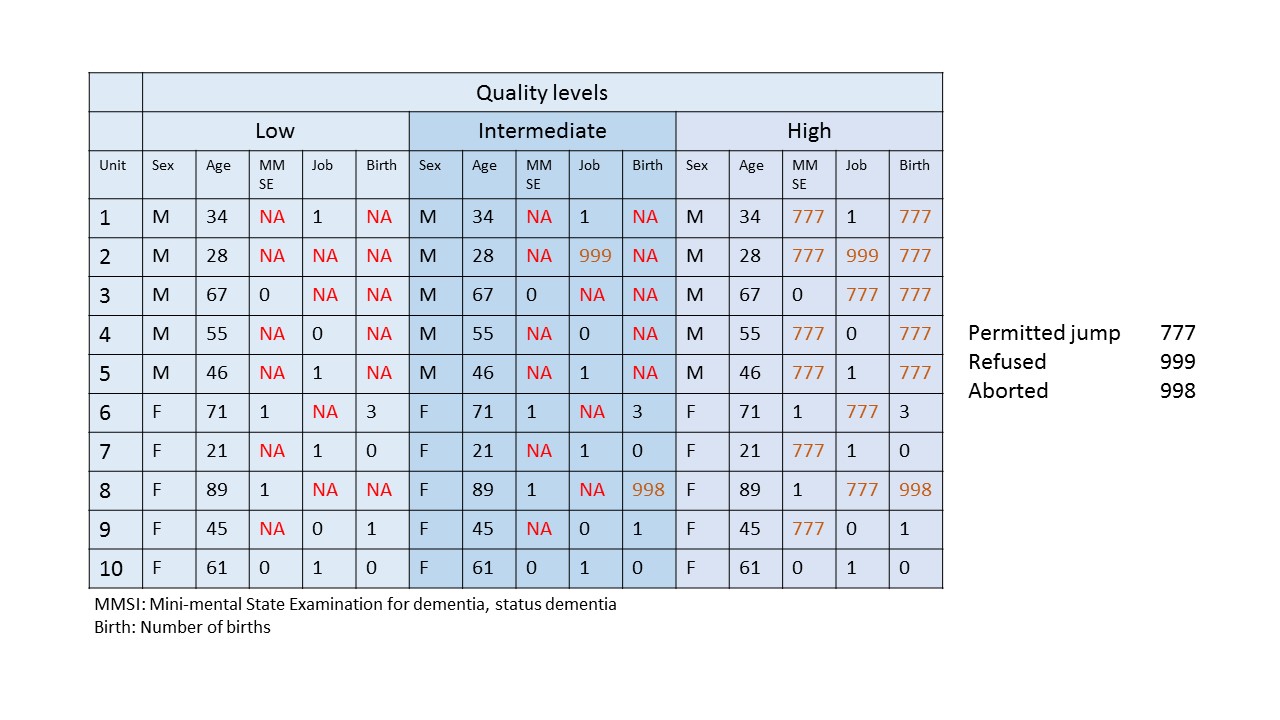Domain “Crude Missingness”
Loading Tree…
Definition
Metrics of missing data values that ignore the underlying reasons for missing data.
Explanation
Computations of missing data values in the domain “Crude missingness” treat missing data and value codes without differentiation. This is necessary in the absence of a complete and differentiated user defined missing coding or in the case of unclear missing codes.
Example
The meaning of computing crude missingness is illustrated based on the graph below. It depicts an excerpt of an examination and distinguishes three quality levels of coding:
LOW: There are only NA entries to represent missing measurements. For three variables, dementia according to the MMSE an instrument on dementia, job status, and number of births there are many missing values.
INTERMEDIATE: NA’s remain but there are codes for missing data (999, 998)
HIGH: All missing values have been assigned a code to explain reasons about missingness. Most of the missing values were due to permitted jumps and are only missing by design. The item was not assessed based on design and therefore should not be treated as missing.

Computing crude missingness would render the same percentage of missing values for all three grades of coding. Yet high quality coding also enables the different handling of permitted jumps based on qualified missingness indicators. The most important difference is the exclusion of jumps from missing data checks because a value that is missing by design poses no formal data quality issue. A huge difference based on the ten cases is obvious for the variable “Births”. Crude missingness indicators would render 60% missing values but qualified missingness indicators would only categorize 10% as being missing.
Guidance
Crude missingness related implementations are frequently the only option to assess missingness if there is no proper coding of missing data.
However, in case of a proper coding of all data values indicators within the domain qualified missingness are preferable over crude missingness approaches.
Literature
- The American Association for Public Opinion Research. Standard Definitions: Final Dispositions of Case Codes and Outcome Rates for Surveys. 2016. AAPOR. https://www.aapor.org/AAPOR_Main/media/publications/Standard-Definitions20169theditionfinal.pdf.



